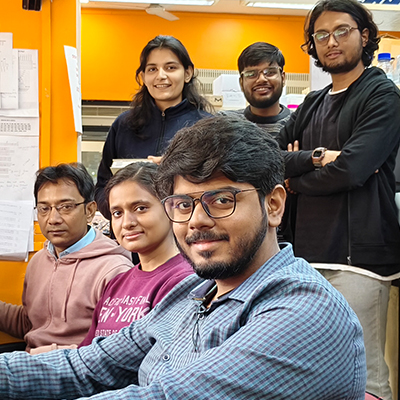IIT Kanpur Researchers Unravel Key Drug Target Receptor for Cancer and Respiratory Disease Treatments
 A team of researchers from the Department of Biological Sciences and Bioengineering at the Indian Institute of Technology, Kanpur, have successfully visualized the atomic structure of CXCR2, a key human receptor involved in cancer progression and respiratory disorders. This discovery, published in the prestigious journal Molecular Cell, paves the way for developing novel therapeutics targeting this critical molecule.
A team of researchers from the Department of Biological Sciences and Bioengineering at the Indian Institute of Technology, Kanpur, have successfully visualized the atomic structure of CXCR2, a key human receptor involved in cancer progression and respiratory disorders. This discovery, published in the prestigious journal Molecular Cell, paves the way for developing novel therapeutics targeting this critical molecule.
Chemokines are small signalling proteins that play a crucial role in immune responses by guiding immune cells to sites of infection and injury. They interact with specific receptors embedded in the plasma membranes of various cells, triggering physiological responses. Among these receptors, CXCR2 is particularly significant, as it is linked to several inflammatory disorders and cancers, including chronic obstructive pulmonary disease (COPD), asthma, atherosclerosis, and pancreatic cancer.
Using advanced cryogenic-electron microscopy (cryo-EM), the IIT Kanpur research team has provided unprecedented insight into the lock-and-key mechanism that allows CXCR2 to recognize multiple chemokines. This breakthrough addresses a fundamental question in biomedical science regarding how multiple chemokines bind and activate a common receptor, while also opening up the possibility of using the structure as a template to design new molecules of therapeutic value.
“Our findings provide a molecular blueprint for designing next-generation therapeutics that can precisely target CXCR2 and potentially reduce its role in cancer and respiratory diseases. By visualizing this receptor in its active state, we now have the opportunity to develop highly specific inhibitors that can disrupt its function, potentially leading to significant advancements in treatment strategies,” said Professor Arun Kumar Shukla, lead investigator of the study at IIT Kanpur.
The research team at IIT Kanpur includes Shirsha Saha, Saloni Sharma, Manisankar Ganguly, Nashrah Zaidi, Divyanshu Tiwari, Nabarun Roy, Nilanjana Banerjee, and Ramanuj Banerjee. The study also involved collaboration with researchers from the University of Tokyo, Japan, including Fumiya Sano, Hiroaki Akasaka, Takaaki Kobayashi, Yuzuru Itoh, Wataru Shihoya, and Osamu Nureki, as well as Andy Chevigne from the Luxembourg Institute of Health, Luxembourg.
This research has been supported by grants from DBT Wellcome Trust India Alliance, Science and Engineering Research Board (SERB), Indian Council of Medical Research (ICMR), and LADY TATA Memorial Trust.
Following this breakthrough, the team has begun developing novel therapeutics, including small molecules and antibodies targeting this receptor. These will undergo laboratory testing, followed by animal studies, bringing IIT Kanpur one step closer to pioneering innovative treatment solutions for cancer and respiratory diseases. This achievement highlights IIT Kanpur’s ongoing commitment to cutting-edge research that drives global healthcare and biomedical innovation.
To red the full paper, visit https://www.cell.com/molecular-cell/fulltext/S1097-2765(25)00058-9


